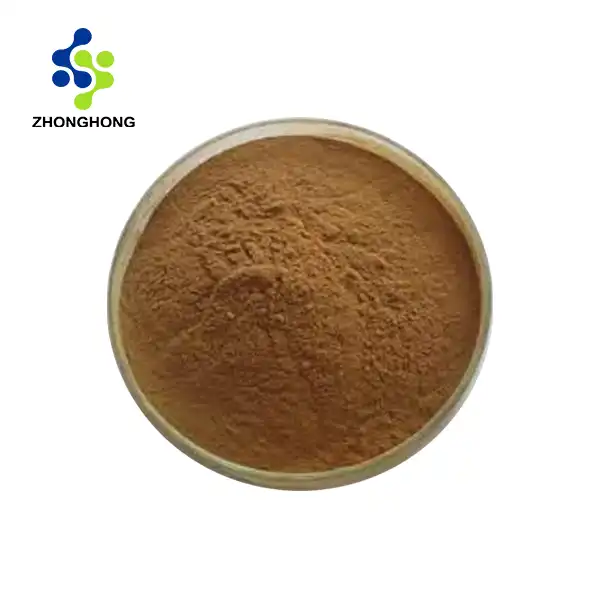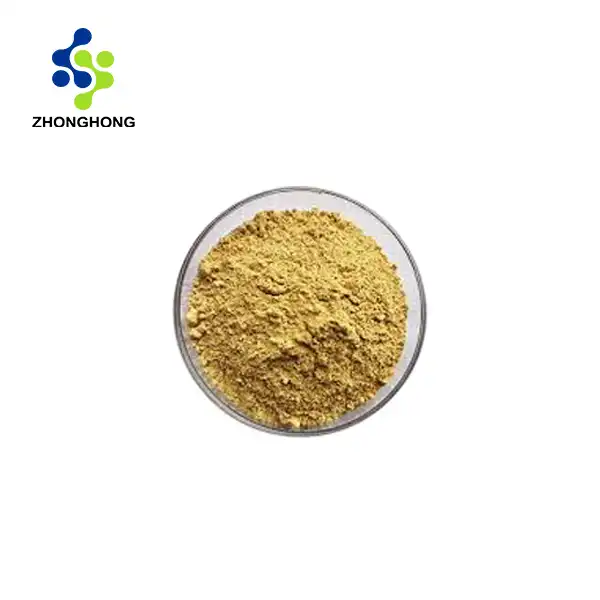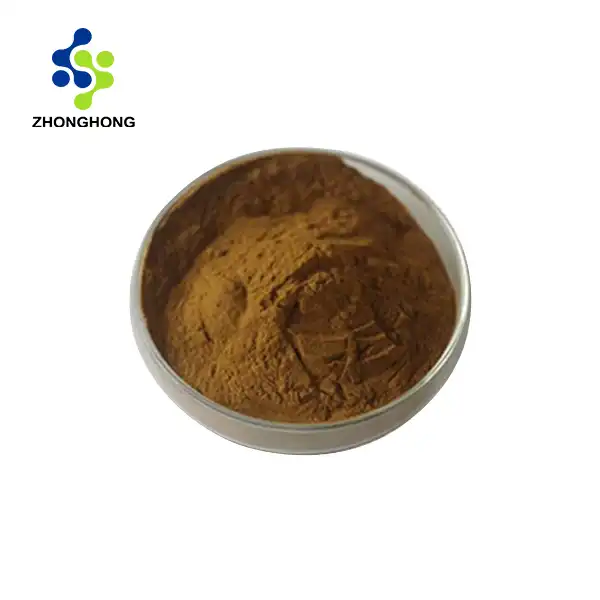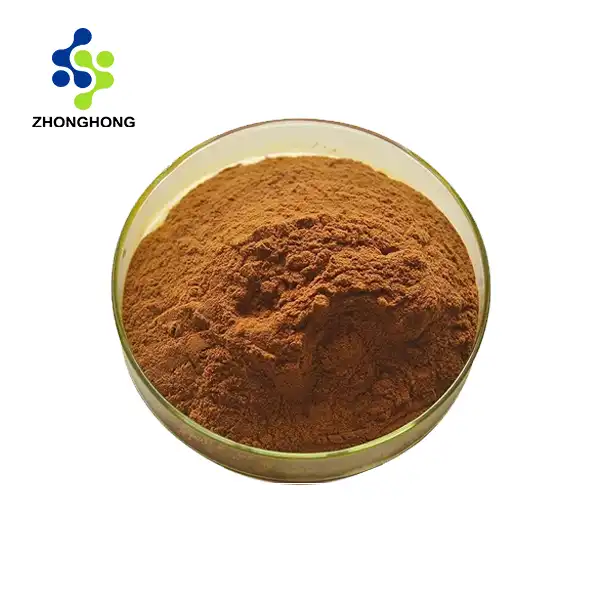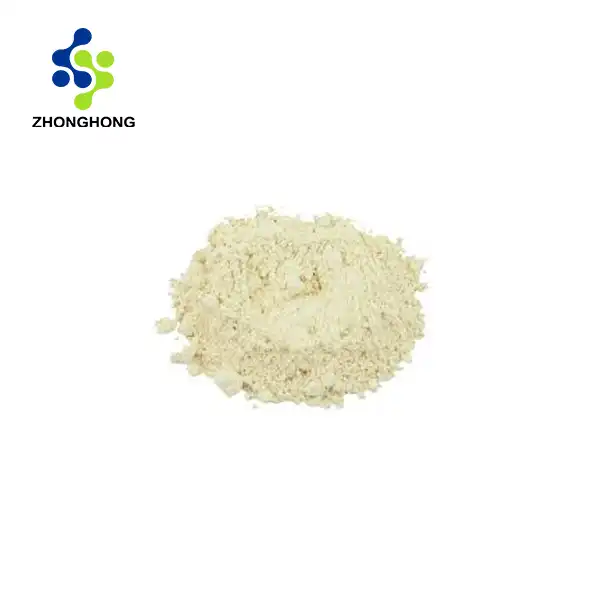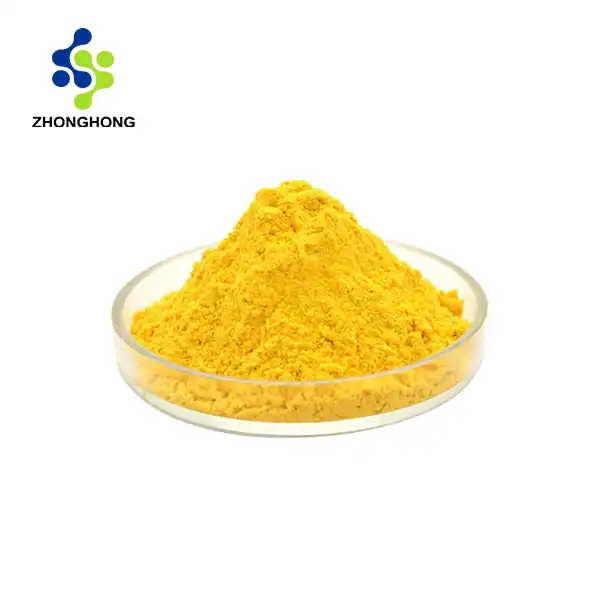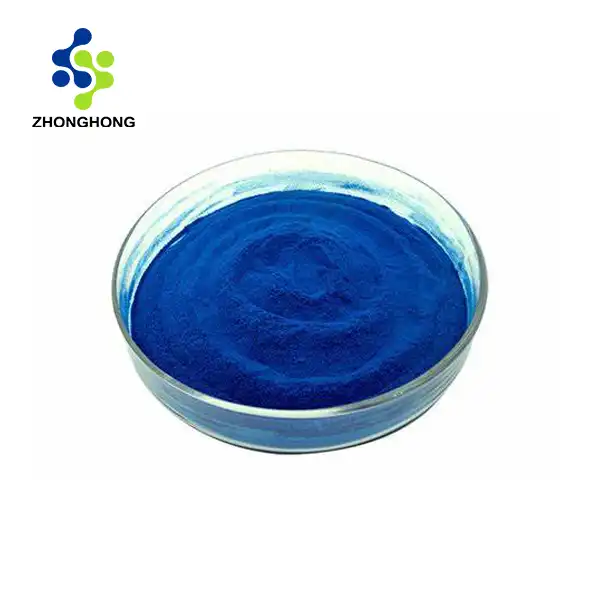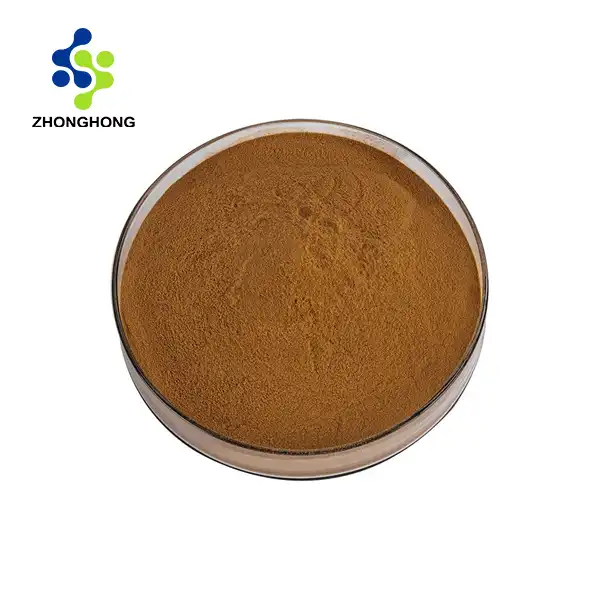Is stachyose a reducing sugar?
2024-10-31 13:47:54
Stachyose Powder, a tetrasaccharide found in various plant sources, has garnered significant attention in the fields of nutrition and biochemistry. To address the question "Is stachyose a reducing sugar?" we must delve into its molecular structure and chemical properties. Stachyose is not a reducing sugar. The presence of a free aldehyde or ketone group is the most important factor in determining whether a sugar reduces or does not reduce. In the case of stachyose, all of its component monosaccharides are linked through glycosidic bonds, leaving no free reducing end. This structural characteristic places stachyose in the category of non-reducing sugars, alongside other complex carbohydrates like sucrose. Understanding this property is crucial for researchers and industries working with stachyose, as it influences its reactivity, stability, and potential applications in various sectors, including food science, pharmaceuticals, and biotechnology.
Chemical Structure and Properties of Stachyose
Molecular Composition of Stachyose
Stachyose, a member of the oligosaccharide family, boasts a unique molecular structure that contributes to its non-reducing nature. This tetrasaccharide is composed of two α-1,6-linked galactose units, one α-1,6-linked glucose unit, and a terminal β-2,1-linked fructose unit. The specific arrangement of these monosaccharides results in a complex carbohydrate with the chemical formula C24H42O21. The molecular weight of stachyose is approximately 666.58 g/mol, making it a relatively large sugar molecule compared to simpler sugars like glucose or fructose.
Glycosidic Bonds and Their Significance
The key to understanding why stachyose is not a reducing sugar lies in its glycosidic bonds. These covalent linkages connect the individual monosaccharide units, forming the tetrasaccharide structure. In stachyose, all the component sugars are linked through their anomeric carbon atoms, effectively "locking" the molecule and preventing the formation of an open-chain form. This configuration is crucial because it eliminates the possibility of exposing a free aldehyde or ketone group, which is characteristic of reducing sugars. The absence of these reactive groups renders stachyose stable in alkaline solutions and resistant to certain chemical reactions typically associated with reducing sugars.
Solubility and Physical Characteristics
Stachyose Powder exhibits high solubility in water, a property that enhances its versatility in various applications. This solubility is attributed to the numerous hydroxyl groups present in its structure, which can form hydrogen bonds with water molecules. The powder form of stachyose is typically white or off-white in color and has a slightly sweet taste, though significantly less intense than that of sucrose. These physical characteristics, combined with its non-reducing nature, make stachyose an attractive ingredient in food and pharmaceutical formulations where stability and controlled sweetness are desired.
Biological Significance and Health Benefits
Role in Plant Physiology
Stachyose plays a vital role in plant physiology, serving as a storage and transport carbohydrate in many plant species. It is particularly abundant in legumes, where it acts as an energy reserve and helps regulate osmotic pressure within plant cells. The non-reducing nature of stachyose contributes to its stability during long-term storage in plant tissues, allowing it to fulfill its physiological functions without undergoing unwanted chemical reactions. This stability is crucial for seed viability and germination processes, as well as for the overall energy metabolism of the plant.
Prebiotic Properties and Gut Health
One of the most significant health benefits associated with stachyose is its prebiotic activity. As a non-digestible oligosaccharide, stachyose passes through the upper gastrointestinal tract intact and reaches the colon, where it serves as a substrate for beneficial gut bacteria. This fermentation process produces short-chain fatty acids (SCFAs), which have been linked to numerous health benefits, including improved gut barrier function, reduced inflammation, and enhanced mineral absorption. The prebiotic effects of stachyose contribute to the maintenance of a healthy gut microbiome, which is increasingly recognized as a crucial factor in overall health and well-being.
Potential Therapeutic Applications
Research into the therapeutic potential of stachyose has revealed promising applications in various areas of health and medicine. Studies have suggested that stachyose may have anti-diabetic properties, potentially helping to regulate blood glucose levels and improve insulin sensitivity. Additionally, its prebiotic effects have been associated with improved lipid profiles and reduced risk of cardiovascular diseases. Some investigations have also explored the potential of stachyose in modulating the immune system and its possible role in cancer prevention. While more research is needed to fully elucidate these effects, the non-reducing nature of stachyose contributes to its stability and potential efficacy in these therapeutic applications.
Industrial Applications and Processing
Food Industry Utilization
The food industry has found numerous applications for Stachyose Powder, leveraging its unique properties as a non-reducing sugar. Its mild sweetness and stability make it an excellent ingredient in low-calorie and diabetic-friendly food products. Stachyose is often used as a functional food additive, providing prebiotic benefits without significantly altering the taste or texture of the final product. In dairy alternatives, such as plant-based milks and yogurts, stachyose can serve as both a prebiotic and a stabilizer. The non-reducing nature of stachyose is particularly advantageous in processed foods, as it does not participate in Maillard reactions, which can lead to unwanted browning or flavor changes during cooking or storage.
Pharmaceutical and Nutraceutical Applications
Because of its potential to improve health, stachyose has attracted attention in the pharmaceutical and nutritional supplement industries. Due to its stability as a non-reducing sugar, it is an ideal candidate for a variety of formulations, including liquid supplements, tablets, and capsules. Stachyose is frequently added to prebiotic supplements for gut health, either by itself or in combination with other fibers. Taking advantage of its non-reactive nature, some pharmaceutical applications investigate the use of stachyose as a carrier or stabilizer for other active ingredients. Stachyose's potential therapeutic benefits, such as its anti-diabetic and cardiovascular-protective properties, are also the subject of research for the creation of novel nutritional supplements.
Extraction and Purification Techniques
The industrial production of Stachyose Powder involves sophisticated extraction and purification techniques. The process typically begins with the selection of stachyose-rich plant sources, such as soybeans or other legumes. Extraction methods may include hot water extraction, followed by a series of purification steps such as ion-exchange chromatography, membrane filtration, and crystallization. The non-reducing nature of stachyose facilitates its separation from reducing sugars during the purification process, often allowing for higher purity levels in the final product. Advanced technologies like supercritical fluid extraction are also being explored to improve the efficiency and yield of stachyose production. The development of these extraction and purification techniques continues to evolve, driven by the increasing demand for high-quality Stachyose Powder in various industries.
Conclusion
Because of its unique molecular structure, stachyose is not a reducing sugar. It is valuable in a variety of industries due to this property, as well as its stability and effects as a prebiotic. Stachyose Powder's potential for a variety of uses is still being investigated, including improving gut health and serving as a useful food ingredient. This fascinating oligosaccharide will likely be used in even more creative ways in the future as research continues. If you want to get more information about this product, you can contact us at liaodaohai@gmail.com.
References
1. Martinez-Villaluenga, C., Frias, J., & Vidal-Valverde, C. (2008). Alpha-galactosides: Antinutritional factors or functional ingredients? Critical Reviews in Food Science and Nutrition, 48(4), 301-316.
2. Van den Ende, W. (2013). Multifunctional fructans and raffinose family oligosaccharides. Frontiers in Plant Science, 4, 247.
3. Roberfroid, M., Gibson, G. R., Hoyles, L., McCartney, A. L., Rastall, R., Rowland, I., ... & Meheust, A. (2010). Prebiotic effects: metabolic and health benefits. British Journal of Nutrition, 104(S2), S1-S63.
4. Martínez-Villaluenga, C., & Gómez, R. (2007). Characterization of bifidobacteria as starters in fermented milk containing raffinose family of oligosaccharides from lupin as prebiotic. International Dairy Journal, 17(2), 116-122.
5. Gupta, R. K., Gangoliya, S. S., & Singh, N. K. (2015). Reduction of phytic acid and enhancement of bioavailable micronutrients in food grains. Journal of Food Science and Technology, 52(2), 676-684.
6. Johnson, C. R., Thavarajah, D., Combs, G. F., & Thavarajah, P. (2013). Lentil (Lens culinaris L.): A prebiotic-rich whole food legume. Food Research International, 51(1), 107-113.
_1728976869676.webp)
